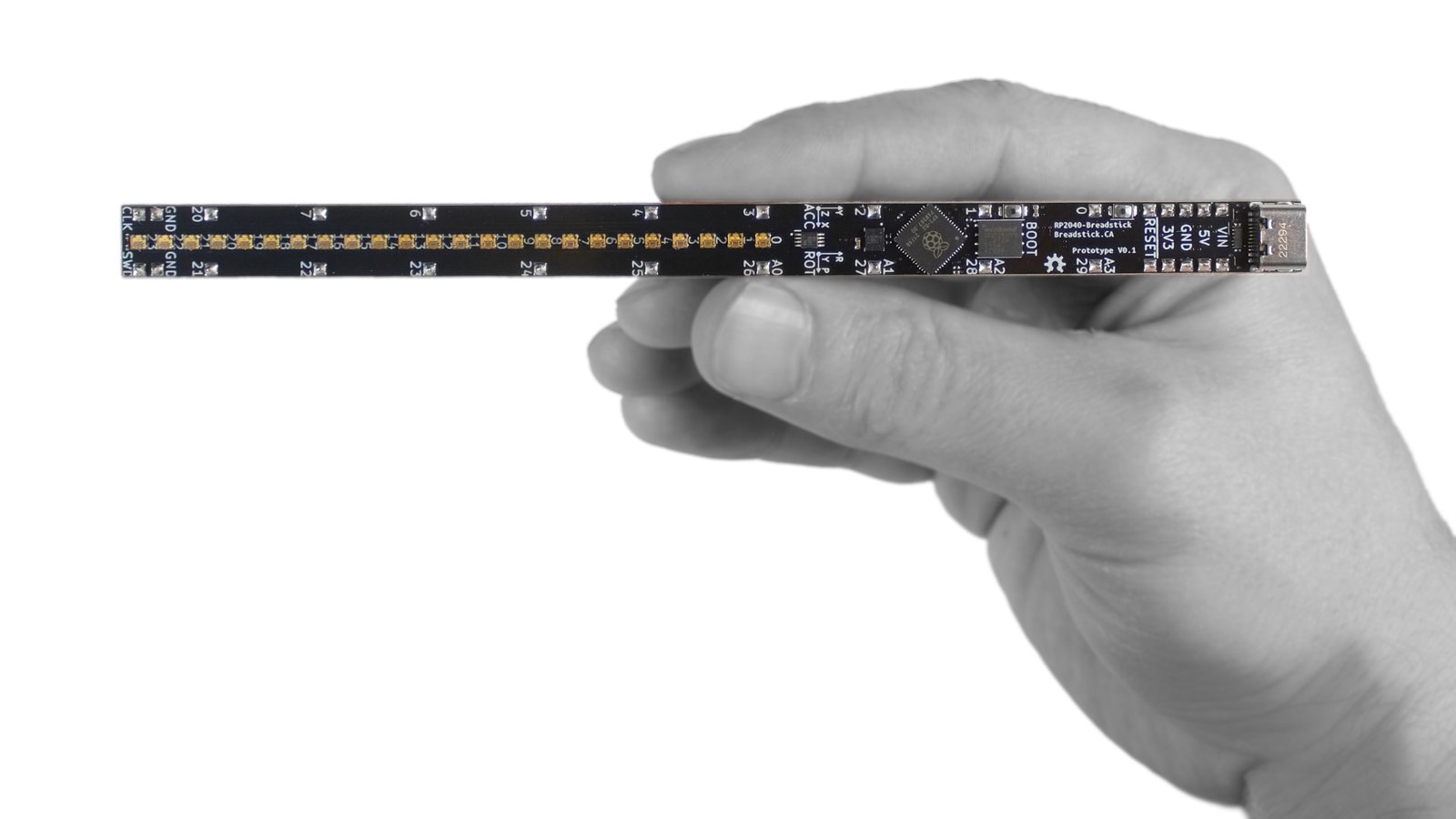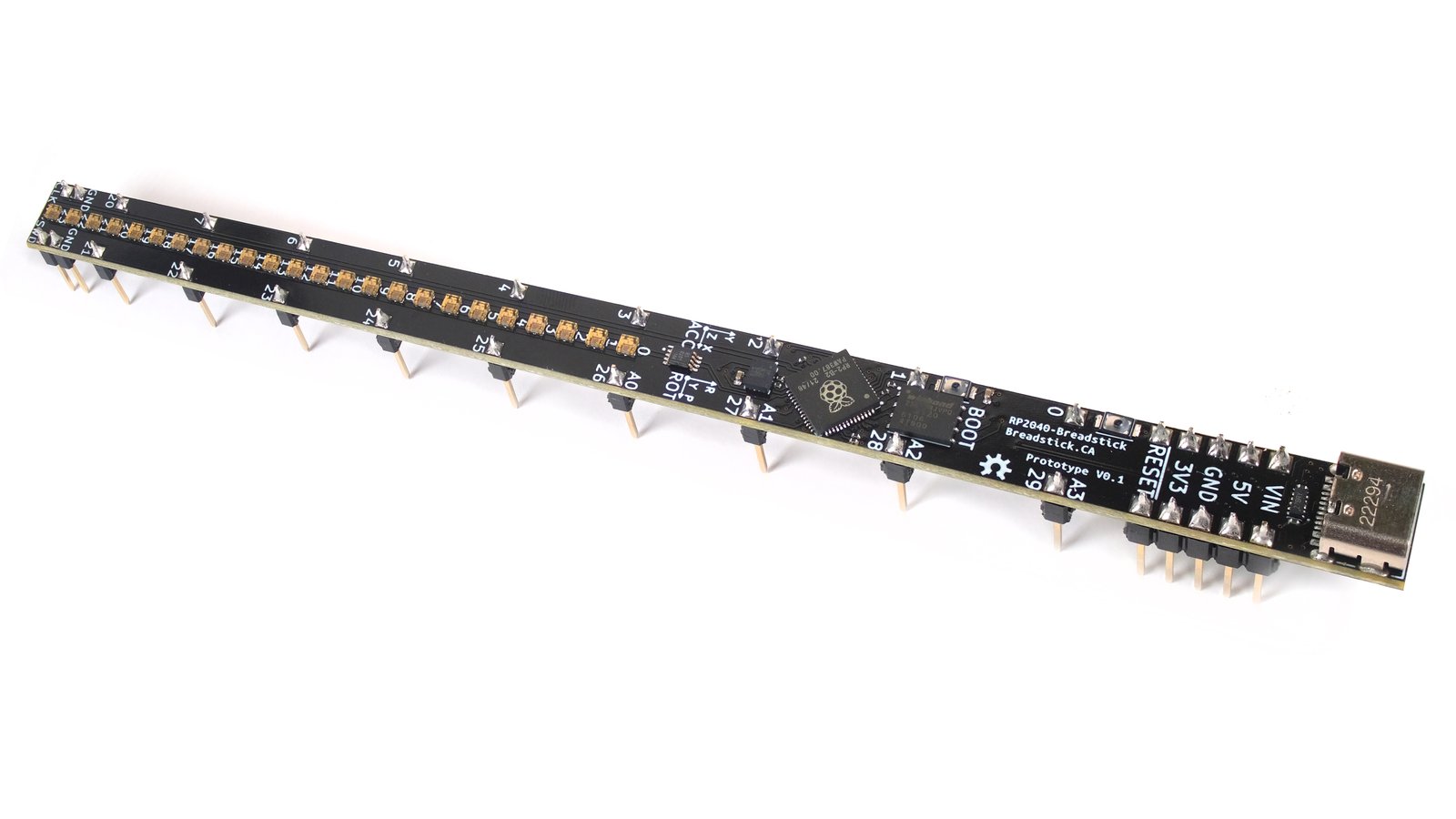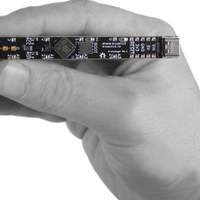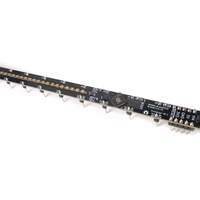Project update 1 of 1
Breadstick is back with a new recipe!
by Michael Rangen, Cody JHello folks.
The M4-Breadstick needs to be re-imagined. It was designed during a time of mass parts shortages that forced us to purchase whole dev boards, just to desolder the chips we needed for building prototypes. The situation has improved some, but a quick search shows the SAMD51 is still difficult to source, leaving the original M4-Breadstick dead in the water.
But fortunately, a new challenger has appeared - the RP2040!
RP2040 Makes Delicious Breadsticks
The Raspberry Pi foundation released its first microcontroller, the RP2040, in January 2021. This cool new board comes with a list of amazing features e.g. dual-core M0+ processors, programmable I/O state-machines, and a baked-in UF2 bootloader ROM that makes resetting/recovering the device extremely user friendly. Most importantly though, this part is readily available. At the time of writing, Digikey has over 25,000 units in immediate stock.
A New Recipe
Raspberry Breadstick began its life as ‘the RP2040-Breadstick project’, where we aimed to design the best dev board we could with all the things we’d learned since making the M4-Breadstick. The M4-Breadstick was a 2-Layer PCB with questionable signal integrity. Raspberry Breadstick prototypes have an 8-layer stack-up that has reference planes for all signal and power layers. We’ve also added features such as USB-C, a 6-Axis IMU, and freed up more space for the 24 DotStar-compatible addressable RGB LEDs.
Follow Our New Project!
We’re very excited to continue developing Raspberry Breadstick so that we can ship yours, hot out of the reflow oven, and get it onto your breadboard. We believe makers should be able to focus more on how they’re going to use all their I/O pins and less on how’re they’re supposed to manage the resulting circuit spaghetti. A clean breadboarding experience awaits, so please help us move on to the next stage of our campaign by signing up for the hot, fresh Raspberry Breadstick pre-launch page!
Build cool things,
Mike





